Hammocks are great to have in your bag when camping, hiking, or if you are just in the backyard. This step-by-step visual guide breaks down how to set up your hammock. Whether you are going on an overnight camp out, or just need to take a quick break from the trail, hammocks are the way to go. Once you learn how to properly hang your hammock, you’ll be relaxing in no time flat.
Where Can You Hang Your Hammock?
This post is going to be a step by step instruction guide for how to hang your hammock from trees. However, camping hammocks can be hung in a variety of places – posts, patios, balconies, cars, bedrooms, shelter houses, boulders, cacti, ceilings, and others. I’ve heard and read about hammock campers getting creative with their hang. I don’t have any personal experience with hanging from anything other than trees and stands so I won’t speak to any alternatives until I have tried it out. I wrote about my experience with the affordable Ozark Trail Hammock Stand and did a mini-review on it. It’s worth a look if you are looking for an inexpensive hammock stand to test out.
What to Know Before You Hang
When you have a hammock there are few things you need to know before you hang that pouch of relaxation. I’m going to quickly summarize the important stuff so you can get a general idea, but if you need more details, be sure to check out my full articles on those topics so you have all the information you will need. Let’s get into it. Shall we?
Using Hammock Straps
This is more of a rule, in my opinion. Especially if you plan to hang from trees. You must use proper hammock suspension straps to hang from. Cordage, paracord, or rope of any kind can damage a tree and expose the living tissue. Sometimes the damage is beyond recovery and the tree will die. Using the proper hammock straps will protect the tree bark from damage and will “leave no trace.” I teach about being conservation-minded in this blog as well as to my scouts. We want to leave nature just as we found it, and this absolutely includes protecting the trees we choose to hang our hammocks from. Even if your hammock comes with a rope suspension system, don’t be fooled into thinking because it came with the hammock that it is safe to use on trees. Nope. Get yourself some proper hammock straps.
ALSO READ: Do camping hammocks harm trees?
Selecting The Right Trees
Selecting the proper trees is a vital part of hanging your hammock. There are several factors you need to consider while scouting out your trees.
Distance Between Trees
Look for two healthy trees that are about five to six paces apart – which is approximately 12 to 15 feet depending on your natural stride. Having the correct distance between the trees will allow you to get the ideal hang angle that will give you enough sag. Sag is needed if you want to sleep comfortably in your hammock.
Size
Make sure the tree isn’t too small, or too large. The tree trunks should be around one to two feet in diameter. If the tree is too small and young, it may not be able to hold the weight. The force will be too great and you risk bending or snapping the tree, ultimately killing it. On the flip side, if the trunks have too large of a diameter, you will eat up all of your strap length and not have enough to hang. In this case, you will need to find trees with smaller diameters or you will have to extend your straps.
ALSO READ: Extending your Hammock Straps
Dangers of Trees
You need to be aware of the potential dangers that come with hanging your hammock from trees. Here are a few things to look for:
Widowmakers:
Widowmakers are dead branches that hang up in the canopy of the trees. Usually, the branch dies and gets lodged in the tree it broke off from or even a neighboring tree. It is for this reason that it is vitally important that you look and follow the trunk of the tree all the way to the top to see if all the branches are healthy. If you see any dead branches, walk away. You don’t want to hang with these above you. It’s just not worth the risk. They are called widowmakers for a reason – if they fall when you are under them, they can potentially kill you.
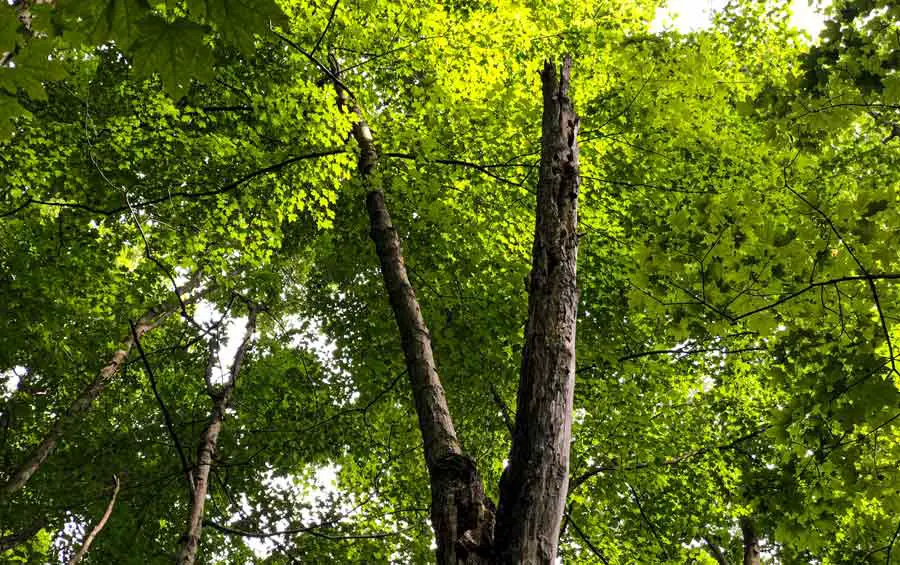
Poisonous Plants
When scouting out a site to hang your hammock, you will need to know how to properly identify the poisonous plants that are in the area around you. Poison ivy is a climbing vine and can be found climbing up the trunks of healthy trees. You definitely don’t want to get your gear or straps near the oils from the plant or you could end up with a nasty rash just from coming in contact with your gear. Poison ivy, oak, and sumac can also be found on the ground so be sure to inspect the ground cover you plan to hangover.
ALSO READ: 12 Tips for Choosing Trees for Hanging Your Hammock
ALSO READ: The 7 Dangers Of Hammock Camping
How to Hang Your Hammock
So now I can get to what you came here for – how to set up your hammock. A couple of things you should know before we begin: there are many types and styles of hammocks as well as hammock straps. I’m using a single nest hammock for this step-by-step tutorial, but this basic explanation applies to most camping hammock and suspension straps.
Step 1:
The first thing you are going to do is get out your straps. All hammock straps come in pairs. Get one strap out and unravel it until you find the end loop. Depending on the manufacturer, you may not have to unravel the strap completely.
Tip: If I can, I will keep the majority of the strap raveled up for easy handling. Also, while packing them up, it’s a good idea to ravel your straps so that the end loop is on the outside so they are ready to go for the next time.
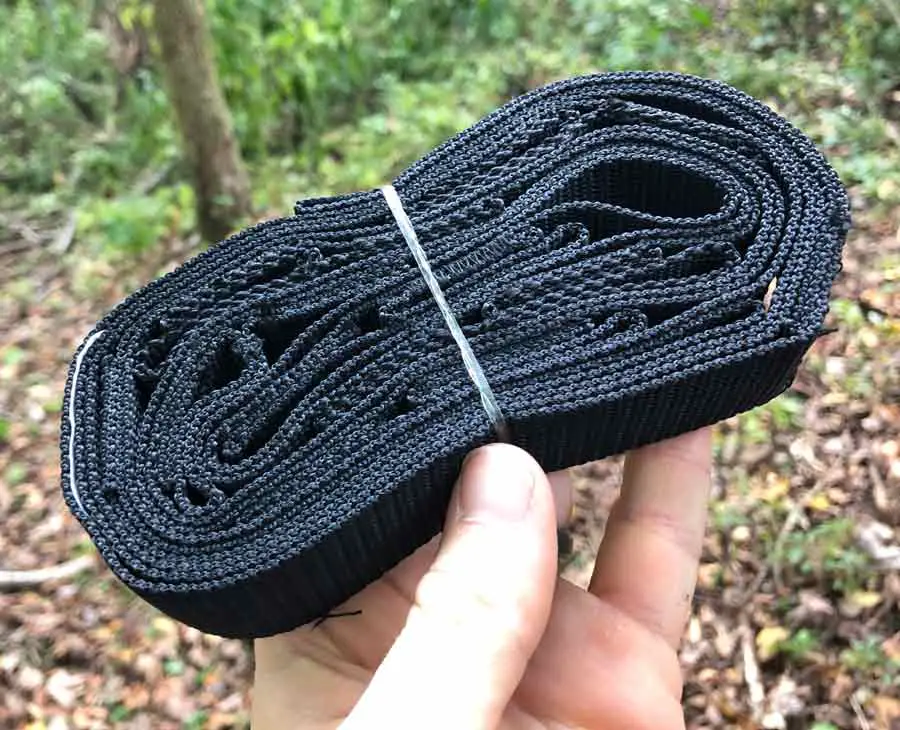
Step 2:
Most hammock straps have a loop at the end. Some straps have one end that has a larger loop, not all, but many of them do. Open the loop at the end and wrap your strap around the tree. Keep the loop in your hand while the rest of the strap hangs down.
Tip: Again, you can keep the strap bundled and from dragging the ground. Use just enough length to wrap around the tree. The bundled strap is much easier to work with.
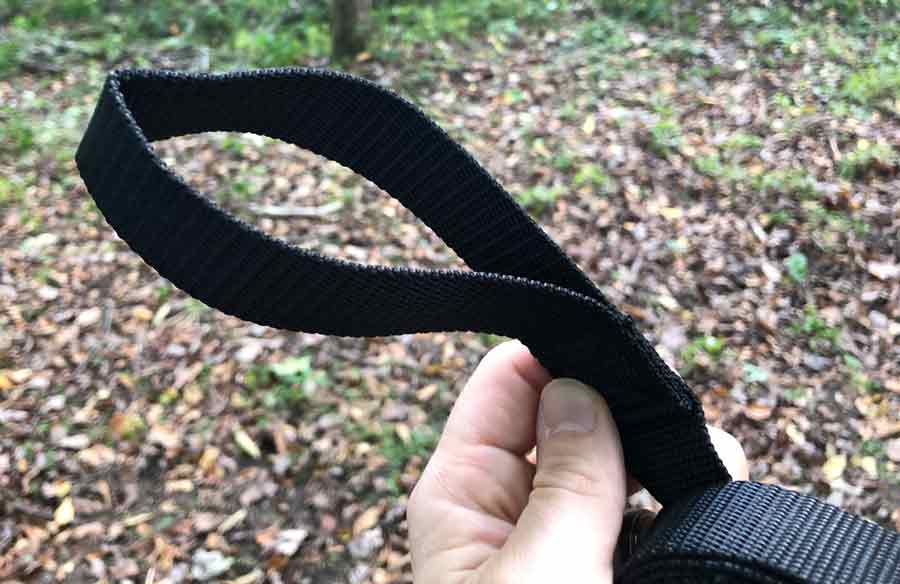
Step 3:
Once the strap is wrapped around the tree, pull the other end of the strap through the hole of the loop.
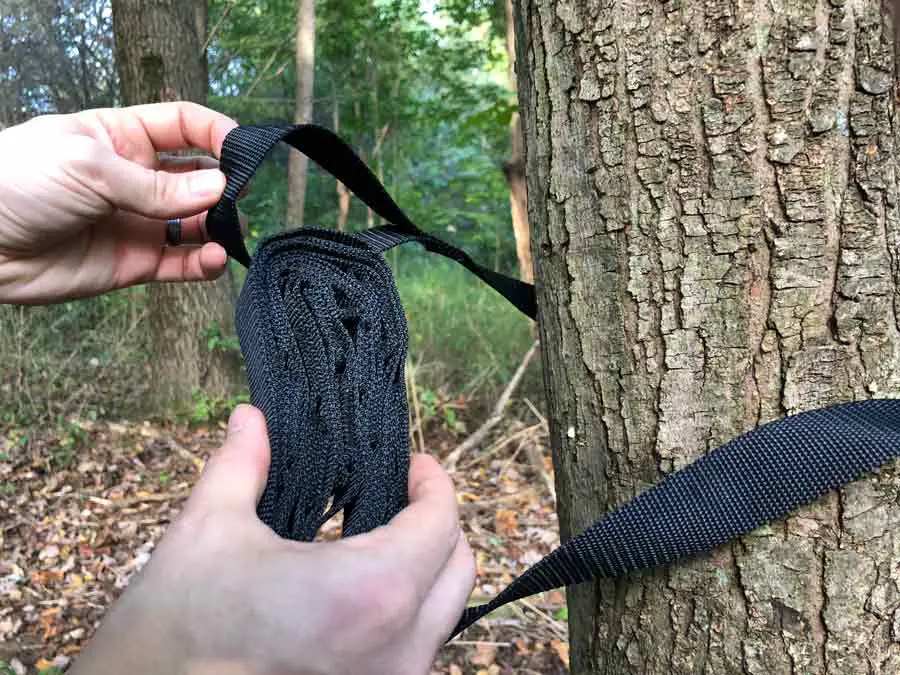
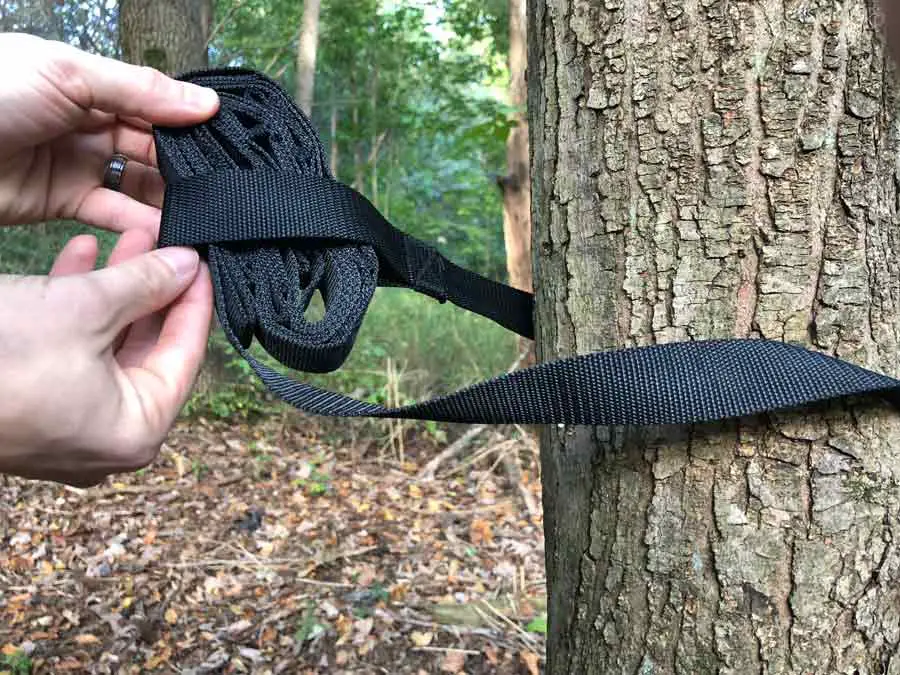
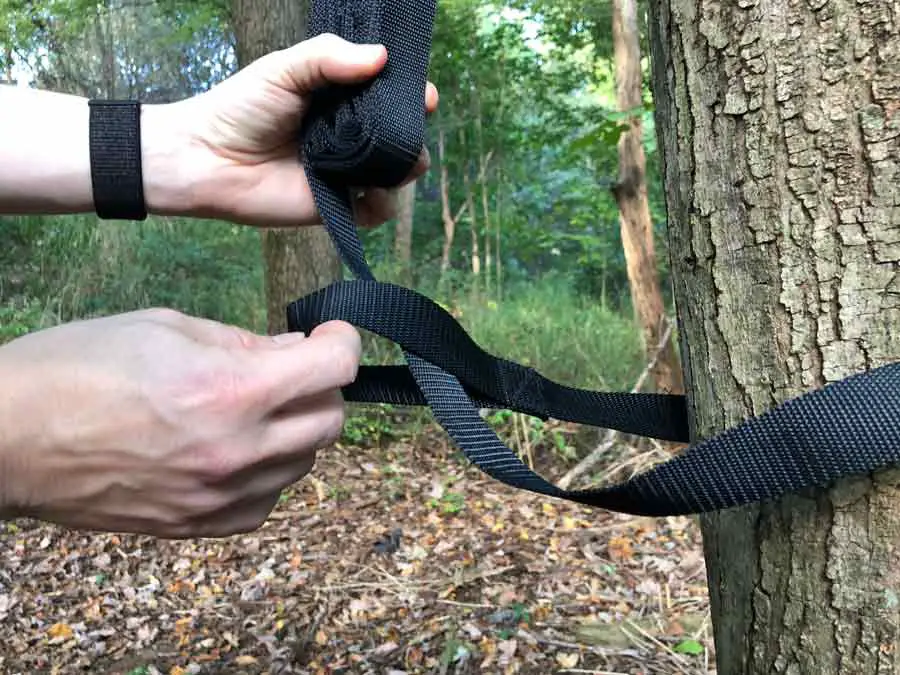
Step 4:
Once the strap is through the loop, position the strap about five to six feet high up on the trunk of the tree. Then pull the strap until it is tight around the tree. Now you have successfully made a lark’s head knot.
See. You’re learning knots and didn’t even know it. Learning some basic camping knots is important if you want to really go all-in. It’s not necessary, but it can help you become a more experienced hammock camper. I have created another step-by-step tutorial of the knots I use for hammock camping
Read More: A Step-by-Step Picture Guide on Knots For Hammock Camping
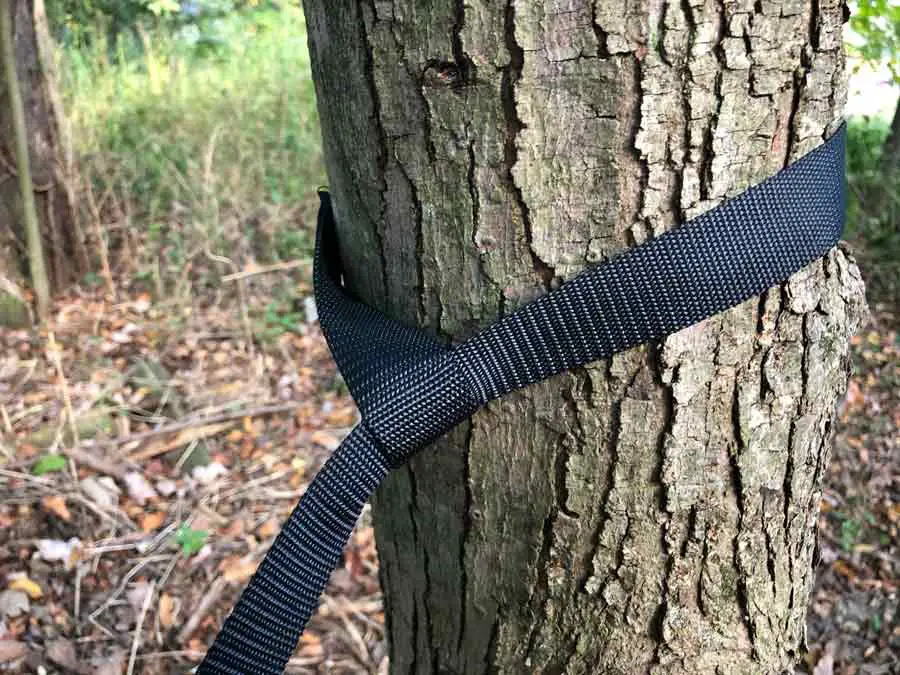
Step 5:
Once you have securely connected one strap to the tree, you need to go to the other tree and repeat the same exact process as you did for the first. After both straps are connected to the trees, you are ready to go to the next step.
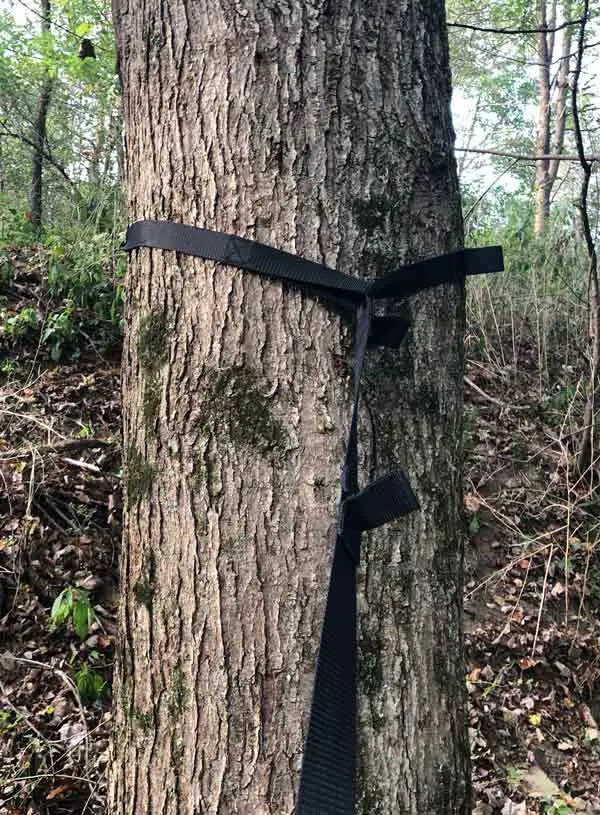
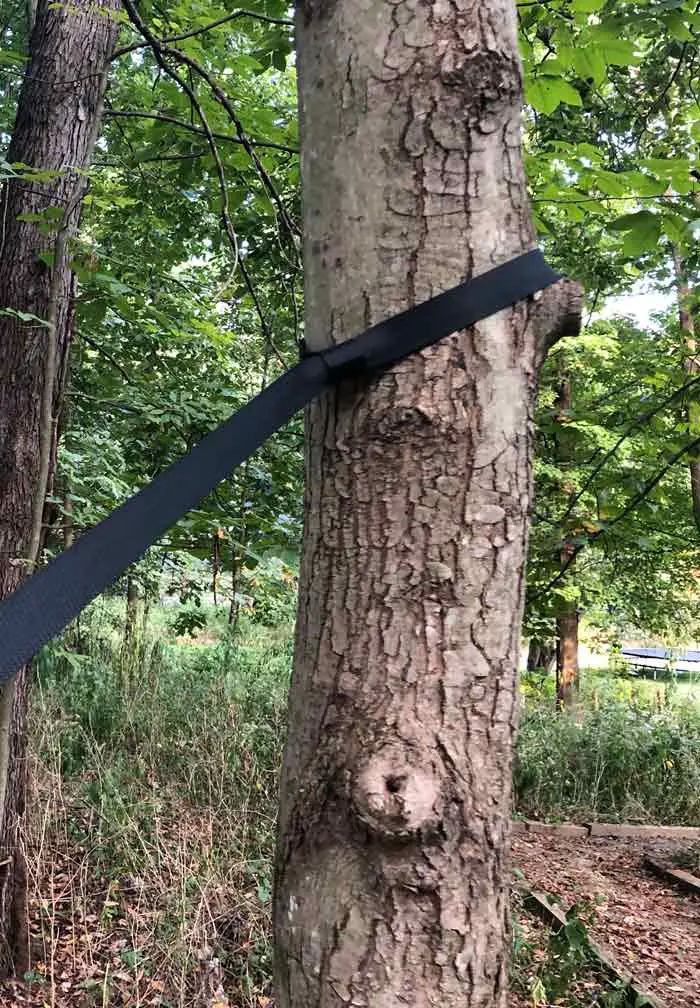
Step 6:
Now you are ready to get your hammock out. Once you have it out you want to locate the first clip in the hammock pouch.
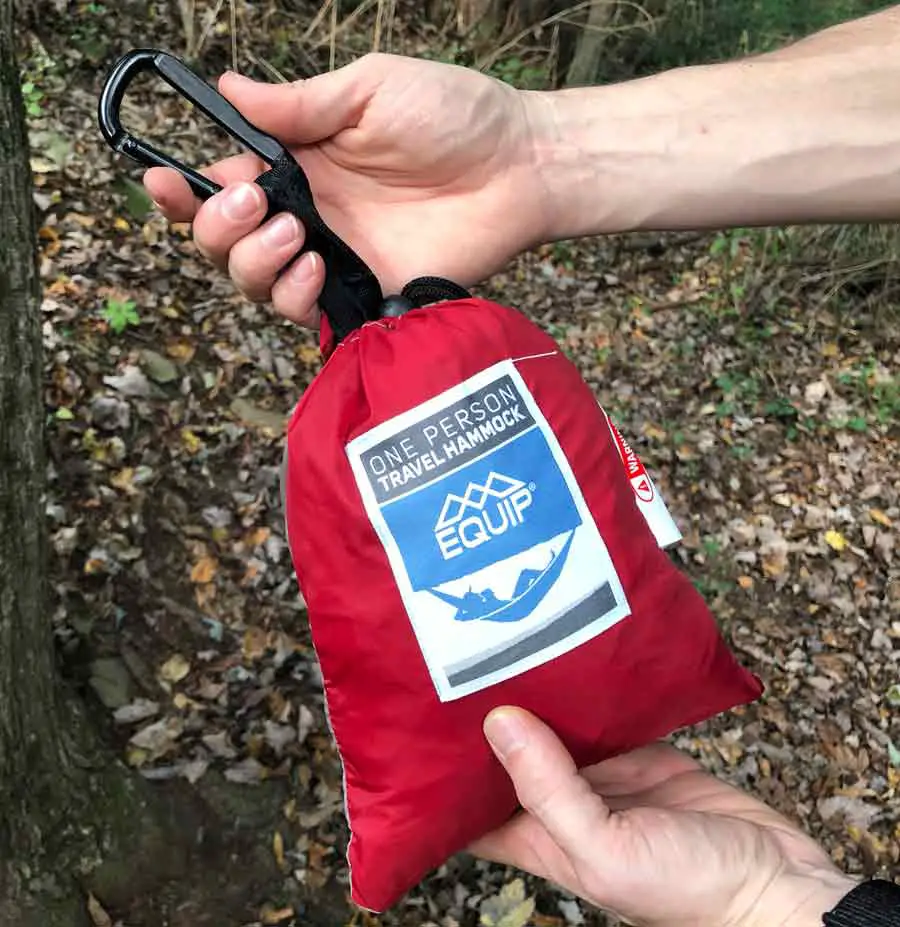
Step 7:
Grab your clip and your strap loop you want to connect to. Then open your clip and connect it to the loop.
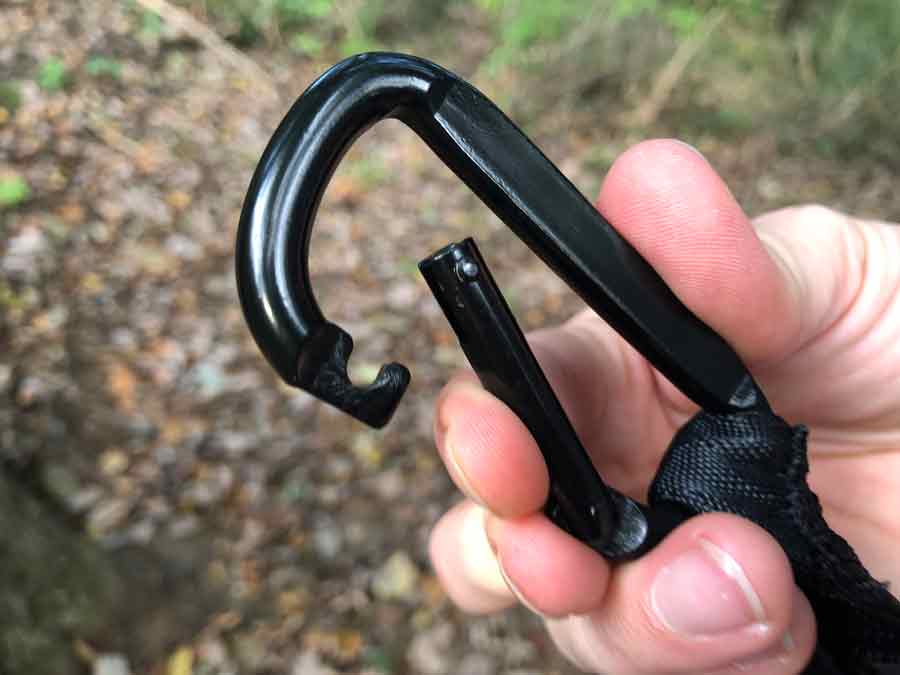
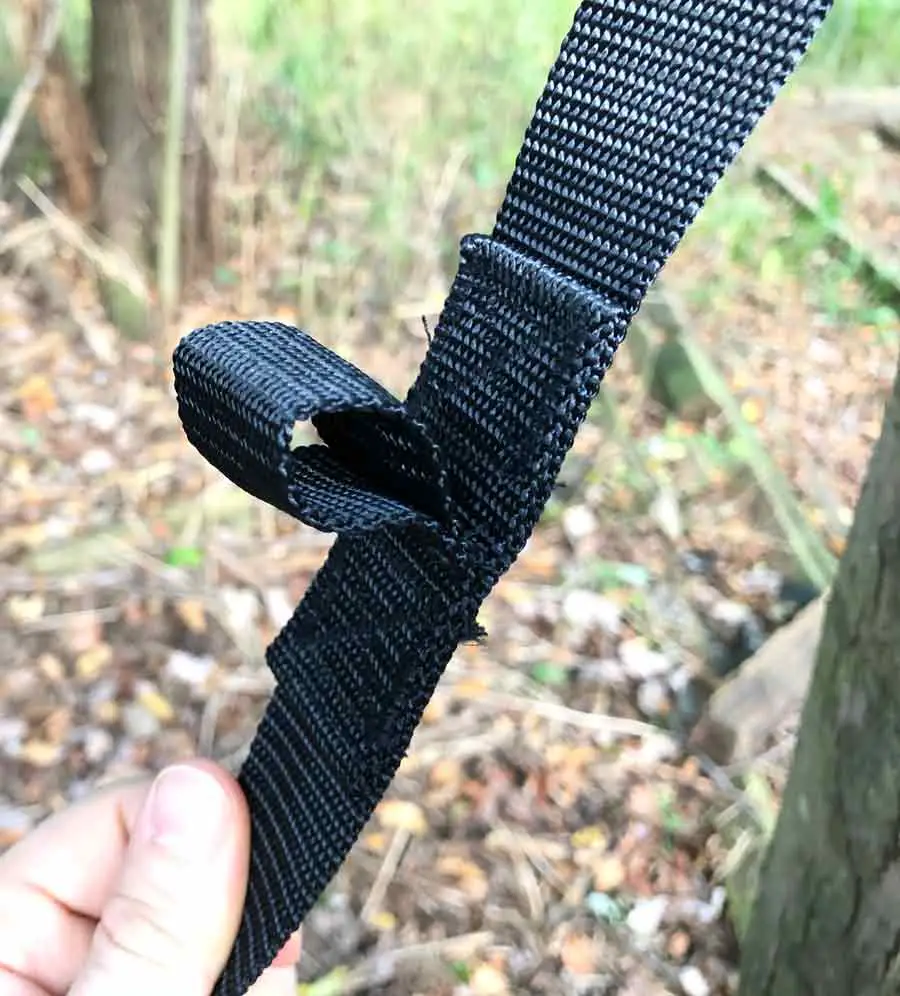
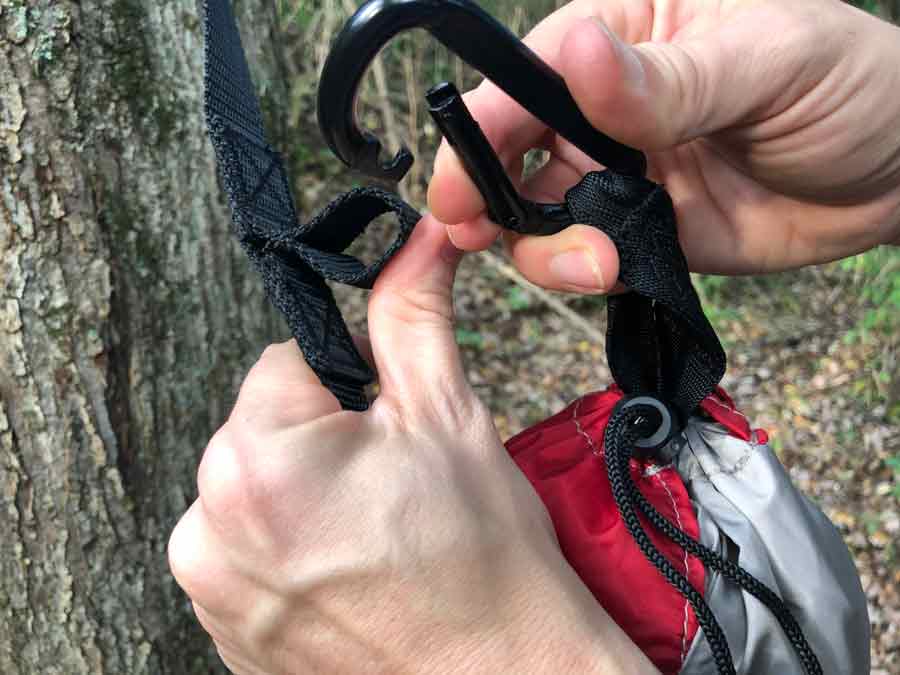
Step 8
Once you connect the hammock to the strap, make sure you have a safe and secure connection. Give it a good tug to see if anything needs to be adjusted to make it more secure.
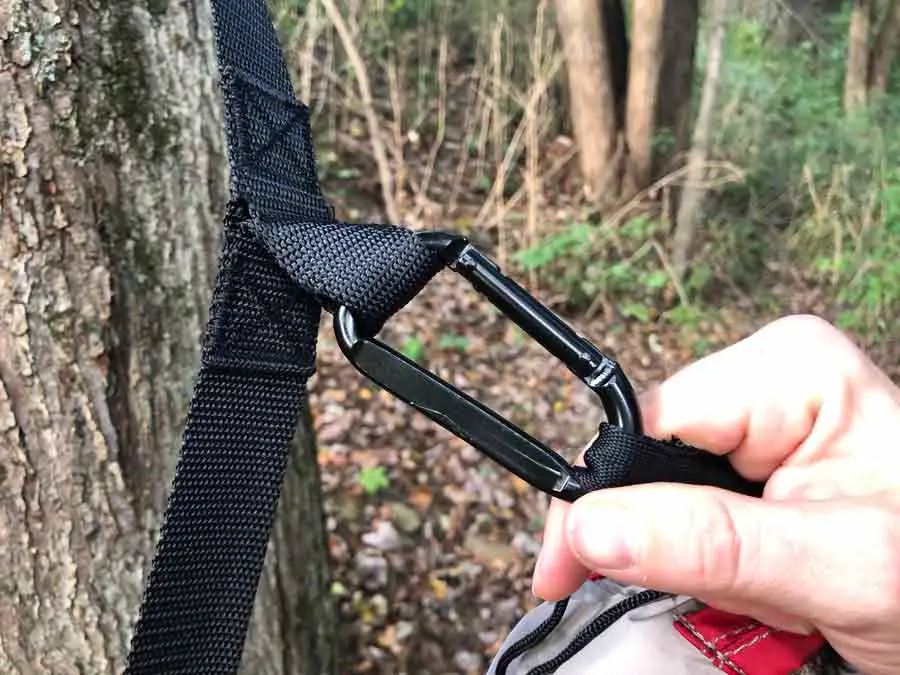
Step 9:
Now that the hammock is connected to the tree, open up your hammock pouch and start pulling out the hammock while walking to the other tree.
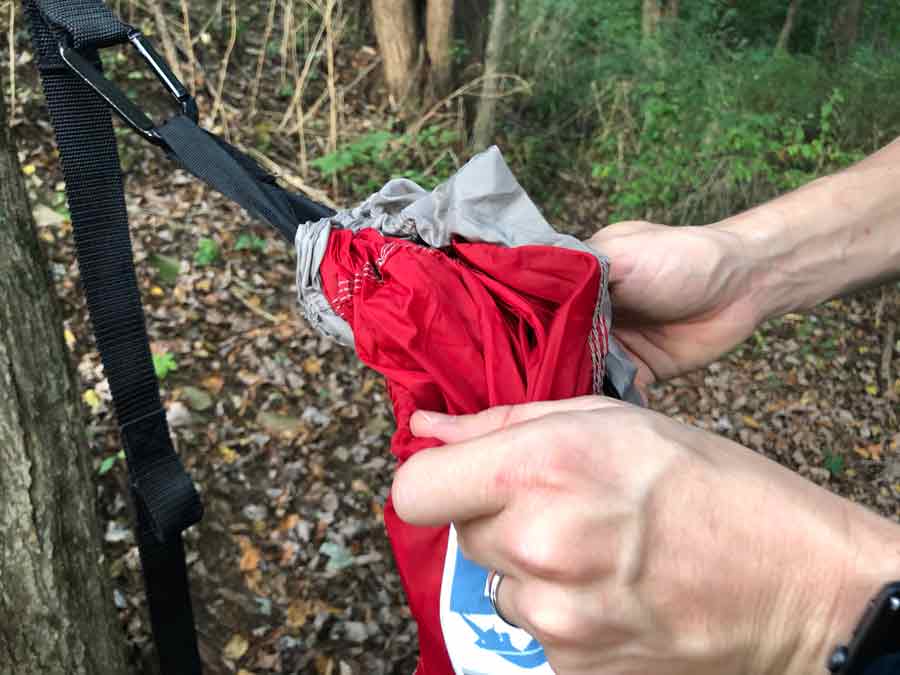
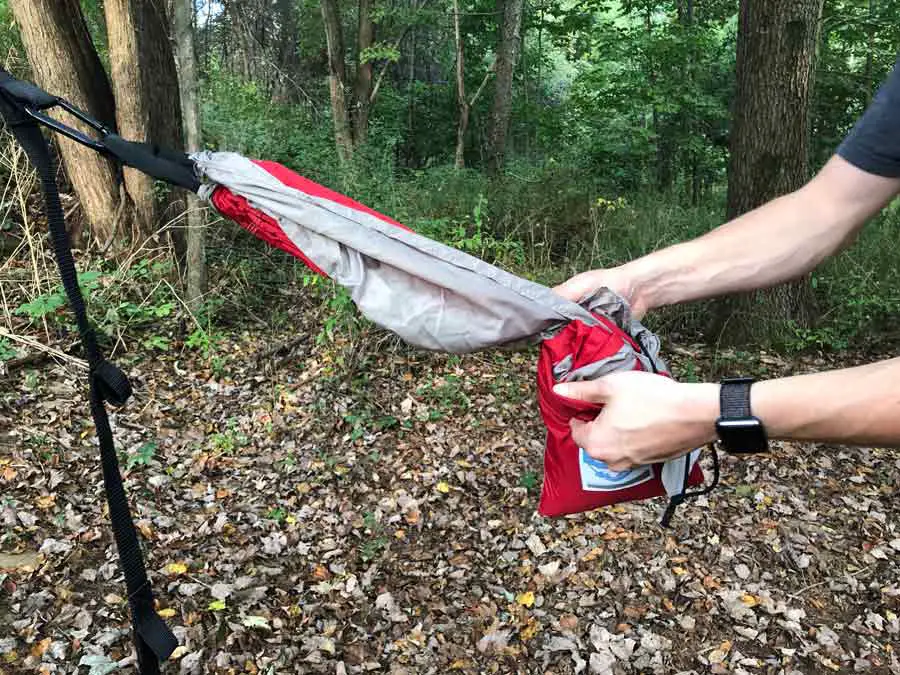
Step 10:
When you have pulled out the hammock halfway you will find that the hammock stops and isn’t pulling out anymore this is due to the pouch is connected to the hammock to leave a nice pouch for you when you are in it for storage.
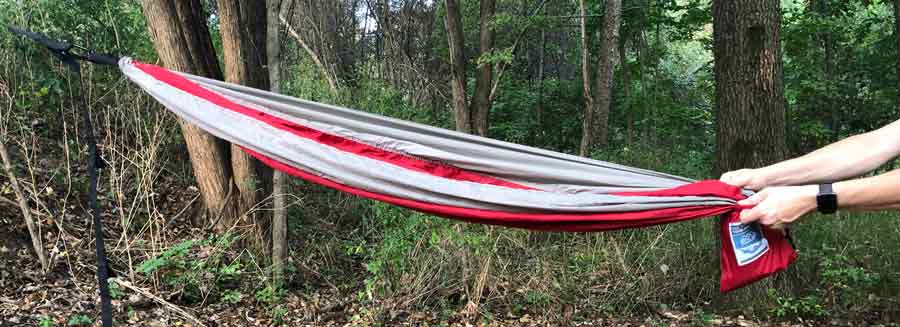
Step 11:
When you hit this halfway point, pull out the rest of the hammock from the pouch.
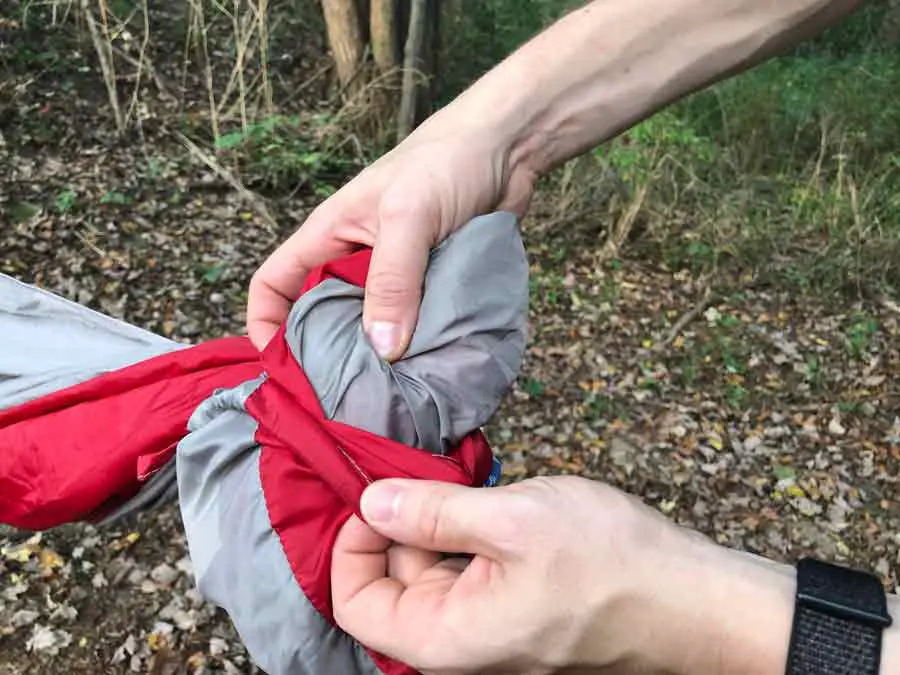
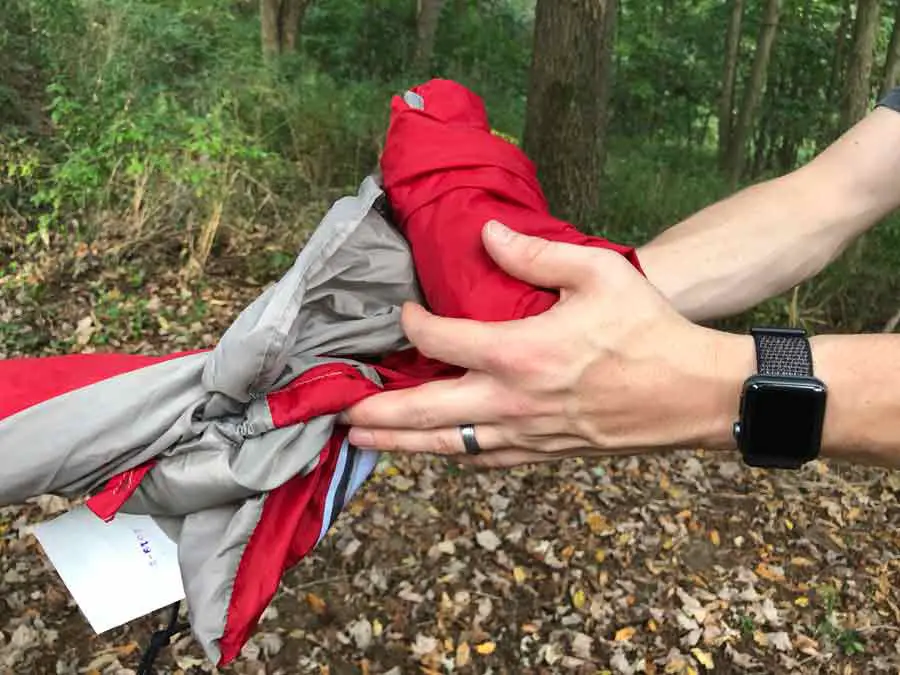
Step 12:
Now that the hammock is out of the pouch, locate the second clip that is attached to the hammock.
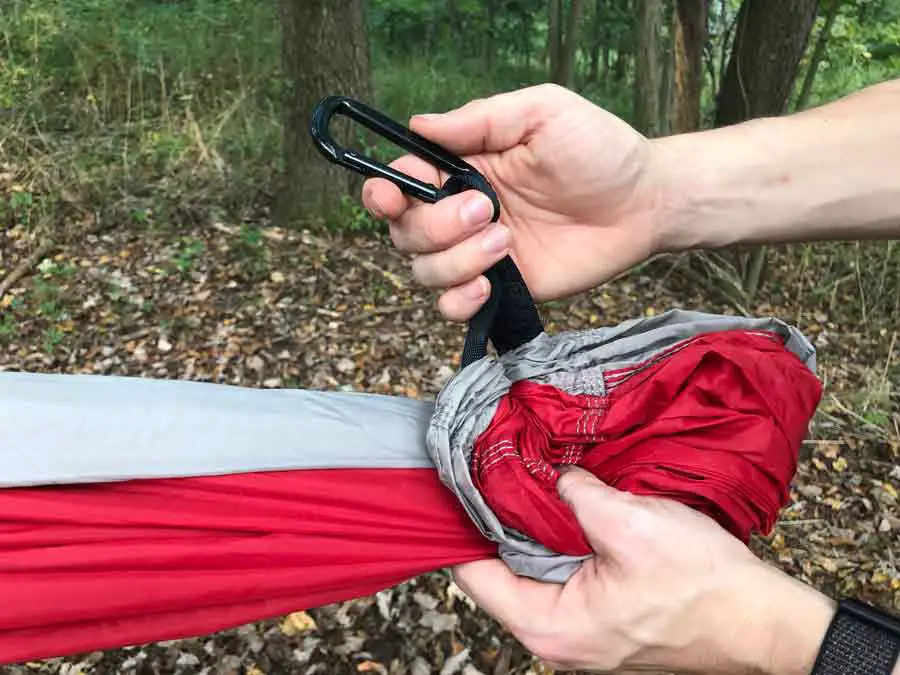
Step 13:
Repeat Step 7 and Step 8 and connect the clip to the second strap on the opposite tree. Again, make sure to give it a good tug to ensure your clip is safely connected to the strap.
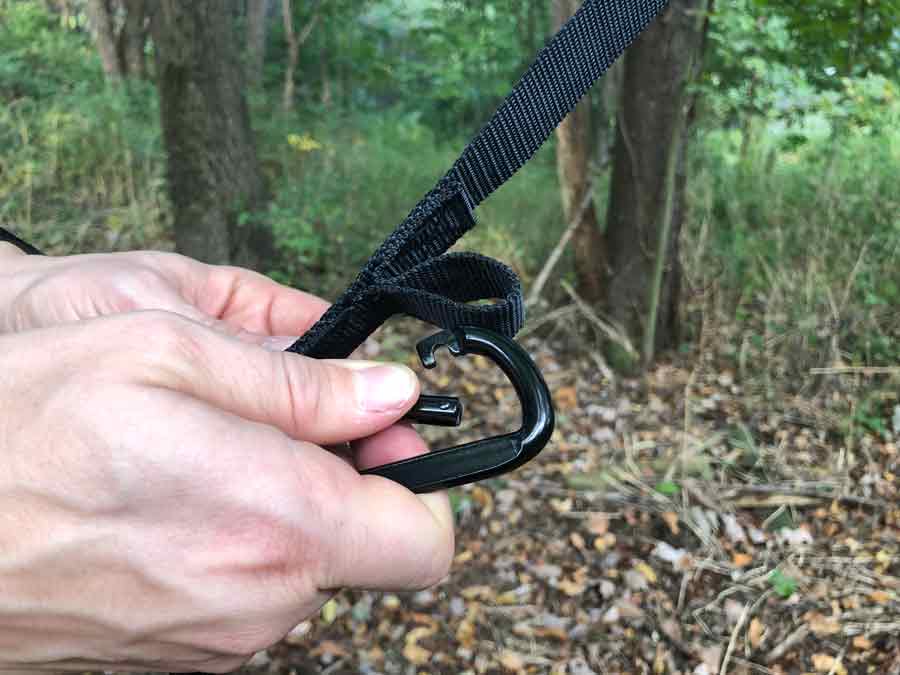
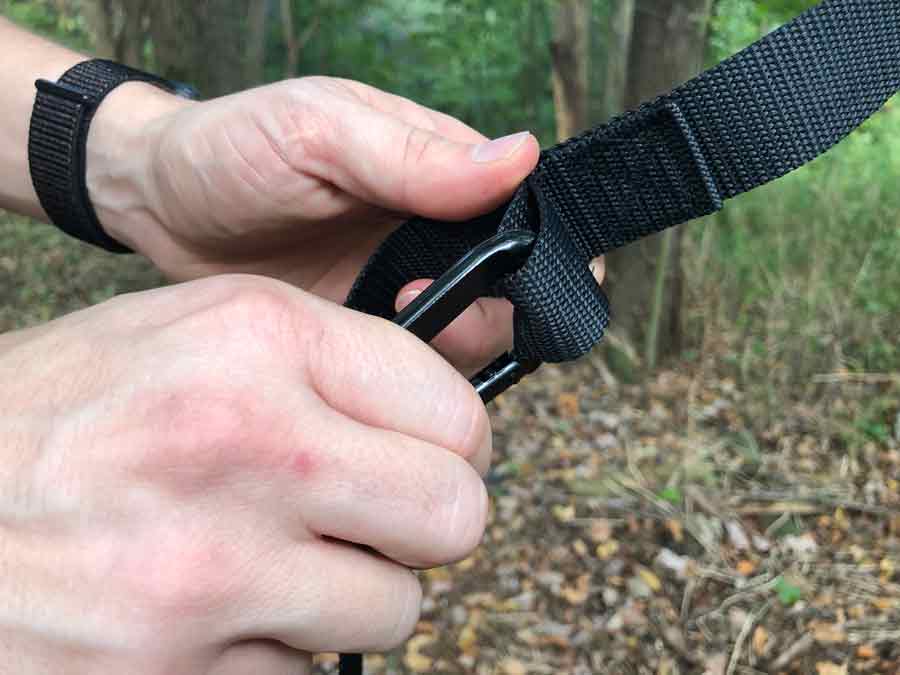
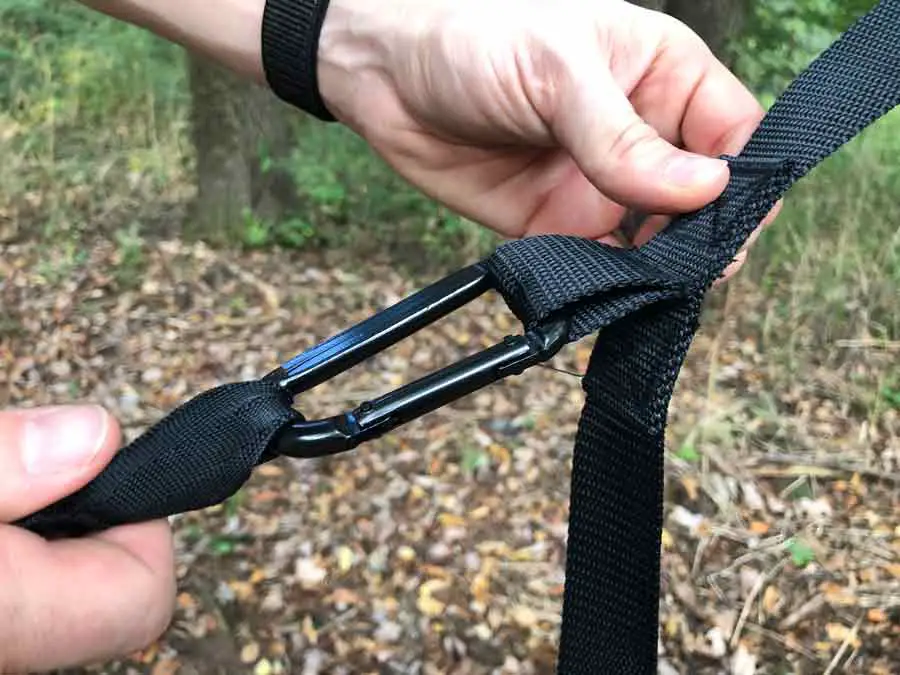
Step 14:
You’ve now hung your hammock, but you still have a couple of things to check before you move on to the next steps. First, step back from your hammock and make sure it’s hanging evenly between the trees. You don’t want one end of the hammock higher than the other. If this is what is happening to your hammock, you can move the clip down to the next loop on the strap or move it to the next highest loop, depending on the situation.
Next, look at your straps and make sure they are at the angle you want your hammock to sag. You will get the best hang when your hammock straps are at a 30-degree angle giving you enough sag to flatten out and sleep on the diagonal.
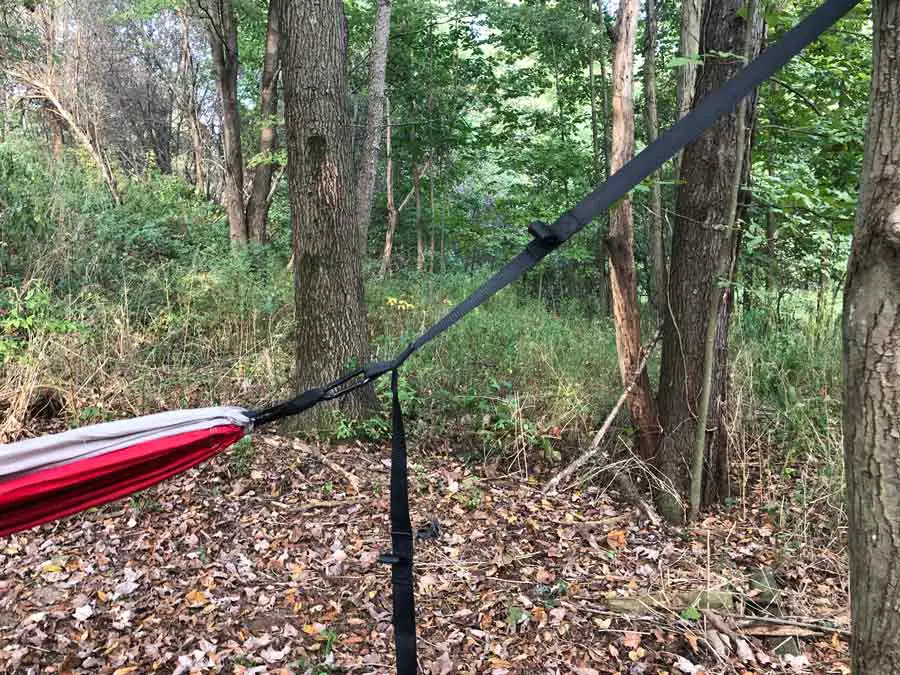
Step 15:
Check how high your hammock is off the ground. The ideal height is around 18 inches give or take. You may want to hang higher or lower, but you want to make sure you keep your hammock at a safe height.
“You never want to hang higher than your willing to fall.” Truth. Accidents can happen, so it’s important to be safe when hanging in a hammock.
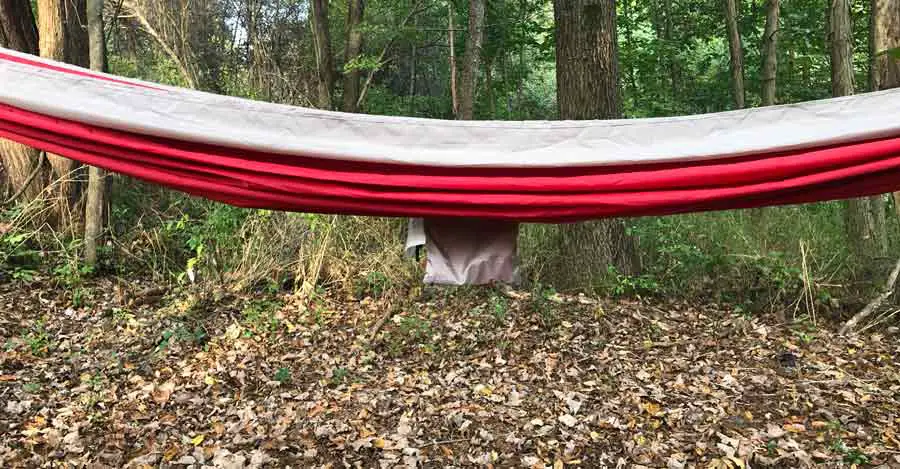
Step 16:
It’s almost time for you to get into your hammock and test it out, but first, you need to fan out your hammock and check to see that you didn’t accidentally hang it upside down (it happens) or that it isn’t twisted.
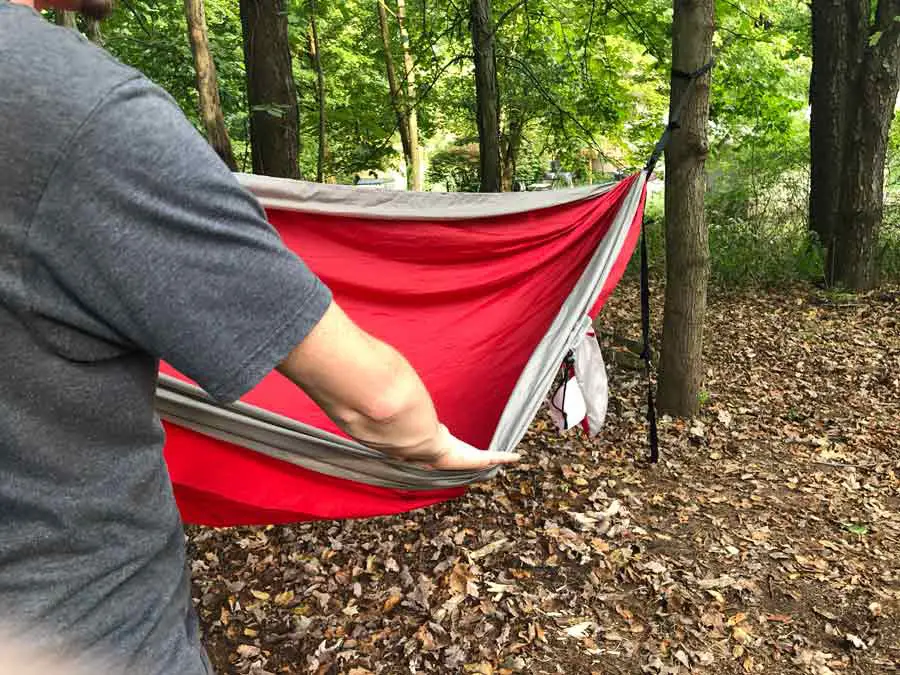
Step 17:
Finally, it’s time to enjoy your hammock – the work is done. Remember to fan out the hammock when you are preparing to get into it – sit down slowly. The straps may slide a few inches when you first put your whole weight into it. Don’t be afraid to adjust if you need to. Enjoy!
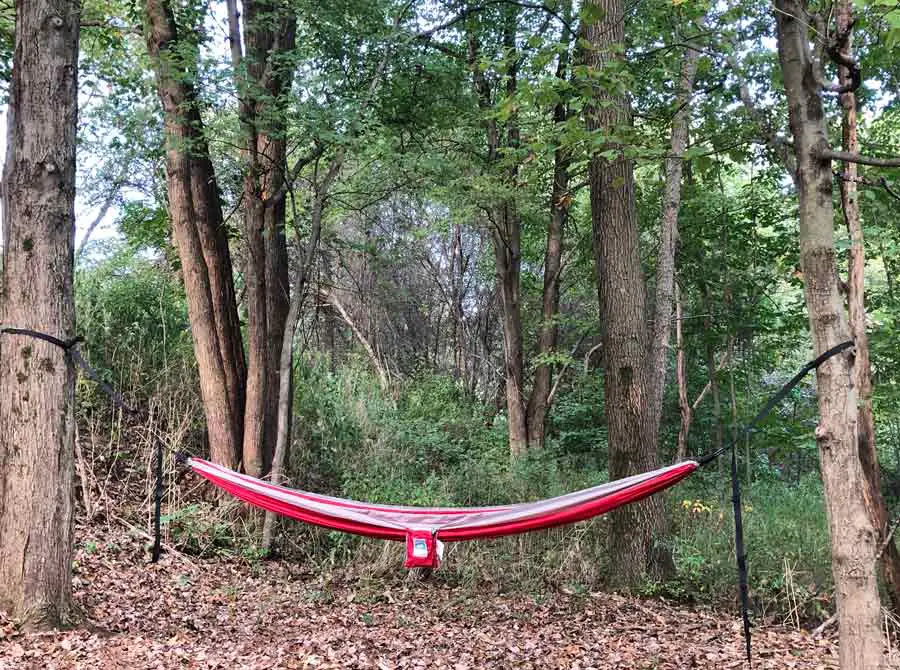
The Fruits of Your Labor
Now you know how to hang your hammock. I hope this guide was helpful and that you are getting to enjoy some time out in nature hanging out in your hammock.
Just a quick note for when you are ready to pack everything back up – Putting your hammock away is just as easy as setting it up. You just repeat this same process, just in reverse. Unclip your hammock on one end, gather and stuff it into the sack as you move to the other end, unclip the hammock, and cinch the pouch. After that, just take down the straps and it’s like you were never there.
I truly hope you grow to love hammock camping as much as I do. No matter where you may hang your hammock, I hope you get all the relaxation you deserve out in The Wanderful Wild.
